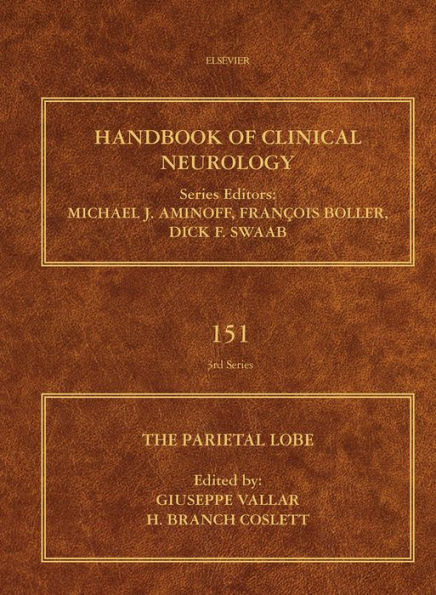

eBook
Related collections and offers
Overview
The Parietal Lobe, Volume 151, the latest release from the Handbook of Clinical Neurology series, provides a foundation on the neuroanatomy, neurophysiology and clinical neurology/neuropsychology of the parietal lobe that is not only applicable to both basic researchers and clinicians, but also to students and specialists who are interested in learning more about disorders brought on by damage or dysfunction. Topics encompass the evolution, anatomy, connections, and neurophysiology, the major neurological and neuropsychological deficits and syndromes caused by damage, the potential for improvement via transcranial stimulation, and the role of the parietal in the cerebral networks for perception and action.
- Provides a broad overview of the neuroanatomy, neurophysiology and clinical neurology of this region of the cortex
- Offers additional insights regarding the role of the parietal in the cerebral networks for perception and action
- Addresses the most frequent complications associated with damage, including somatosensory, perceptual, language, and memory, deficits, pain, optic ataxia, spatial neglect, apraxia, and more
- Edited work with chapters authored by global leaders in the field
- Presents the broadest, most expert coverage available

Product Details
| ISBN-13: | 9780444636249 |
|---|---|
| Publisher: | Elsevier Science |
| Publication date: | 03/05/2018 |
| Series: | ISSN , #151 |
| Sold by: | Barnes & Noble |
| Format: | eBook |
| Pages: | 608 |
| File size: | 105 MB |
| Note: | This product may take a few minutes to download. |
About the Author
H. Branch Coslett, MD, is the William N. Kelley Professor of Neurology at the Perelman School of Medicine of the University of Pennsylvania in Philadelphia, Pennsylvania, USA. He also serves as Chief of Neurology at the Michael J Crescenz VA Medical Center in Philadelphia and previously worked at Temple University School of Medicine. His work has focused on a variety of topics in human cognitive neuroscience as well as non-invasive brain stimulation with Transcranial Magnetic Stimulation (TMS) and transcranial Direct Current Stimulation (tDCS). Studies with patients with brain lesions have included theoretically motivated explorations of cognitive disorders such as aphasia, alexia, neglect, apraxia, motor planning and disruptions of body cognition. He has also explored the anatomic bases of these disorders using techniques such as Voxel-Based Lesion-Symptom Mapping and support vector regression. He has used non-invasive brain stimulation both as therapy for neurologic disorders and to address questions regarding the neural basis of cognitive functions such as interval timing. Dr. Coslett is the author of more than 200 manuscripts and edited The Roots of Cognitive Neuroscience (with Anjan Chatterjee) as well as multiple special issues of journals. He is a founding editor of Neurocase (with John Hodges and Ian Roberts) and has served on multiple editorial boards.
Table of Contents
Section I. Neuroanatomy and Neurophysiology of the Parietal Lobe1. The history of the neurophysiology and neurology of the parietal lobe2. The evolution of the parietal lobe: Rats, monkeys, apes and humans3. Cortico-cortical and cortico-subcortical connections of the parietal lobe4. Somatosensory maps5. The parietal lobe and pain perception6. The parietal lobe and the vestibular system7. Multisensory and sensorimotor maps8. Extinction as a deficit of the decision making circuitry in the posterior parietal cortex
Section II. Neurological and Neuropsychological Deficits after Parietal Lobe Damage9. Somatosensory deficits10. Pain syndromes and the parietal lobe 11. Optic ataxia12. Simultanagnosia and Balint’s syndrome13. Perceptual deficits of object identification: The apperceptive agnosias14. Unilateral spatial neglect15. Disorders of body knowledge16. Constructional apraxia17. Limb apraxia18. Language deficits19. Memory deficits20. Gerstmann’s syndrome21. Parietal lobe epilepsy22. Transcranial stimulations of the parietal lobe for improving neurological deficits
Section III. The Parietal Lobe and Brain Networks for Action and Perception 23. The “dorsal” parietal stream24. Action systems in the human brain25. Parietal lobe and tool use26. Parieto-frontal networks for eye-hand coordination and movements27. The parietal lobe and memory28. The parietal lobe “mirror” neuron system
